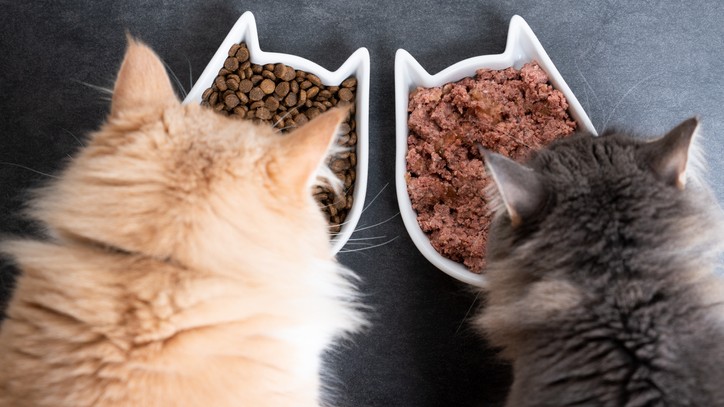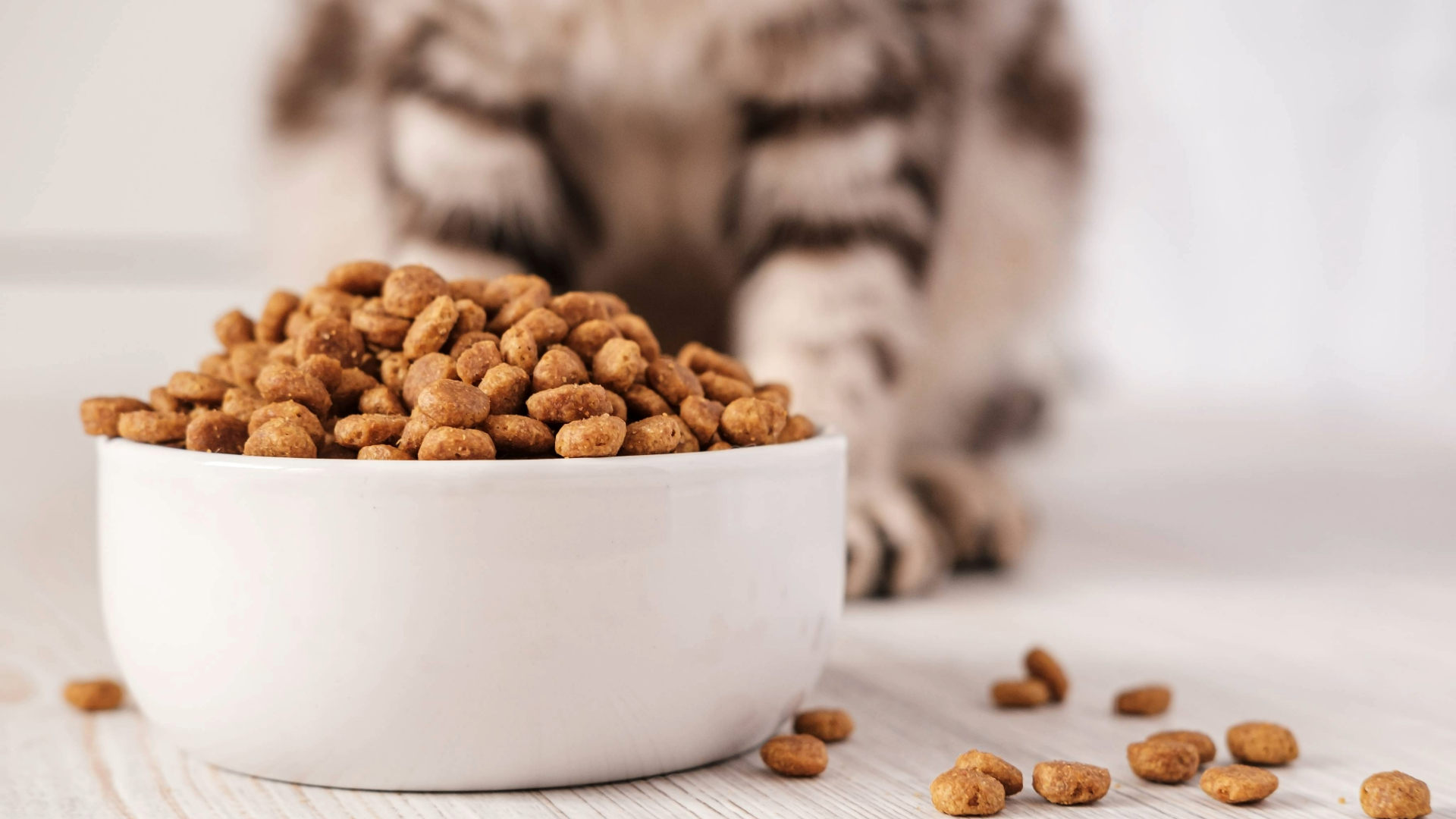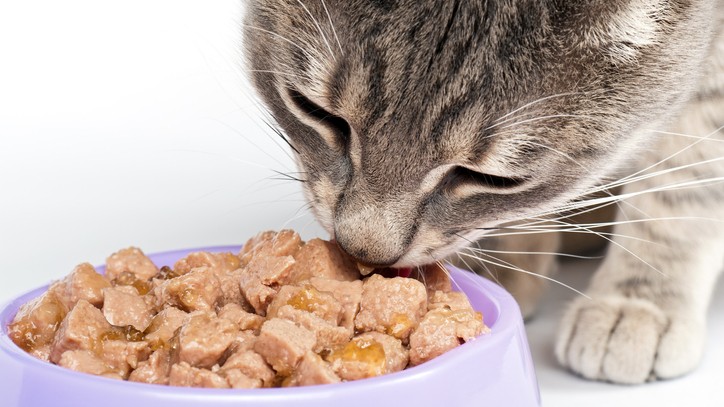
If you’re considering a change to your cat’s diet, you might be wondering, ‘Is dry cat food best?’ As fellow pet parents, we understand how overwhelming the sheer number of options can feel, which is why we’ve called in vet Dr. Joanna Woodnutt to share her expert advice.
The good news is that both the best dry cat food and the best wet cat food are complete, balanced, and provide excellent nutrition for your cat. So, if you’ve been feeding them one and feeling unsure, you can rest easy. While both types are suitable, each comes with its own pros and cons, and your choice ultimately depends on your cat’s health, preferences, and individual needs.
Dry food is often more affordable and convenient, while wet food adds moisture to your cat’s diet, helping to reduce strain on their bladder and kidneys while keeping them hydrated. Below, Dr. Woodnutt compares the advantages and disadvantages to help you make the best choice for your furry friend.
What is dry cat food?
Dry cat food, also known as ‘kibble’ or ‘cat biscuits’ is a type of processed food that has had moisture removed to help to preserve it. It’s a very commonly fed type of cat food owing to its easy availability – you’ll find it in every supermarket and corner store across the country.
Calorie for calorie, it’s also cheaper than other types of cat food, because you aren’t paying for water. Dry cat food usually comes in bags, from 1kg in size right up to 15kg or more. However, it does go stale, and unless you have lots of cats, it’s advisable not to go for such a big bag – no more than your cat can eat in three months.
Pros of dry cat food
It’s commonly thought that dry cat food is better for your cat’s teeth. There is some evidence that a dry diet may keep the teeth looking cleaner, but it doesn’t appear to prevent periodontitis, which is the most common type of dental disease in cats.
Some specific diets have been evaluated by the Veterinary Oral Health Council for their ability to reduce plaque and tartar, and for those looking for a dry diet to help dental health, these are a better place to start than the average supermarket brand. Dry cat foods are also safe to leave down if your cat is a grazer. Unlike wet food, they do not spoil quickly and are unlikely to attract flies.
However, this can only be done in cats that can moderate their food intake – greedy cats quickly put on weight when left to eat all they like. The good news is that dry foods are also easy to portion – you can adjust right down to the individual kibble to make sure your cat is taking in what they need.
Kibble is also great for putting in slow-feeders, which allow your pet to ‘hunt’ and complete tasks to get their feed – great for mental and physical health.
Allowing your cat to express their hunting instinct is important, so feeding with the best cat puzzle feeder allows them to ‘hunt’ their prey and is an ideal way to keep them occupied for longer than the five minutes it takes them to finish a bowl of food.
Cons of dry cat food
Of course, dry cat food isn’t ideal for every cat, and it does have some major downsides. The biggest problem with dry food is that it contains 10-20% moisture, considerably less than the 75% that feline prey would contain.
So cats need to drink to make up for this – and they’re not great drinkers. Some of this can be overcome by investing in the best pet water fountains and novel water bowls, but for many cats, dry food doesn’t meet their water-intake requirements.
Dry cat food: The verdict
Some dry foods have been proven to reduce plaque and tartar, but not all. If you’re going to feed dry for this benefit, you’d be better off picking one of the VOHC accepted products.
It’s easier to portion and leave down for cats that like to graze. However, it doesn’t meet cats’ water intake requirements, which can cause urinary problems in some cats.

What is wet cat food?
Wet cat food comes in cans, pouches, or tins. It can also have a variety of textures; pate, chunks in gravy, chunks in jelly, or soup. Wet food is easily found at all supermarkets and pet stores. It can vary wildly in quality and price, but on the whole is more expensive than dry food.
Pros of wet cat food
Most cats prefer wet food to dry food, although there are always exceptions. Wet cat food is closer to the natural diet of cats in texture and water content, which is good for cats that don’t drink enough water.
Wet cat food contains about 75% moisture, and has been proven to increase urinary output compared to dry cat food. It’s great for cats that are fussy eaters and cats that have gone off their food. It can also be good for cats with dental pain – particularly the ‘pate’ types.
Cons of wet cat food
Unfortunately, feeding your cat wet cat food is likely to cost you more than feeding dry food. It’s also more difficult to portion your cat’s food (it’s hard to get three-quarters of a tin right!), and cats are prone to becoming overweight when pet parents consistently over-feed.
It also can’t be left out for your cat for longer than an hour or two, as it quickly goes off and attracts flies. Open cans should be stored in the fridge, but you might find you have to warm the food before feeding if your cat is particularly fussy. Un-homogenized wet cat foods (i.e. anything with distinct chunks) can allow cats to pick out their favorite bits, which means they aren’t necessarily getting a balanced diet.
Many owners say that their cat just licks off the gravy and they end up throwing the rest away, but these cats are missing out on vital nutrients. Wet cat food also can’t be used with most enrichment feeders, such as treat balls and mazes, and since enrichment is thought to be extremely important for your cat’s mental health, they might be missing out.
Wet cat food: The verdict
Wet cat food is ideal for cats with urinary or kidney issues, as the extra water helps these systems to function properly. It’s also great for fussy cats or those that have few teeth. However, it’s more expensive and harder to store than dry food, and some wet cat foods allow cats to pick their favorite bits and leave the rest.

Dry cat food vs wet: Which is best?
Ultimately, the choice between dry and wet cat food comes down to your cat and you. Does your cat prefer dry or wet food? Which option is best for your budget and lifestyle? Cats are very texture-based eaters, so if possible, introducing kittens to both dry and wet food from a young age is best so that they learn to like both options.
Both dry and wet food offer complete and balanced nutrition for your cat, so you can rest assured that whichever option you choose, your cat is getting all the nutrients he or she needs. Offering your cat a combination of wet food along with some dental dry food (look for products labeled with the Veterinary Oral Health Council Seal!) in a puzzle feeder is a great option to get the best of both worlds while also giving your cat some much-needed mental and physical stimulation!
You might also want to read our guides: Is wet food bad for cats? and best cat food.







